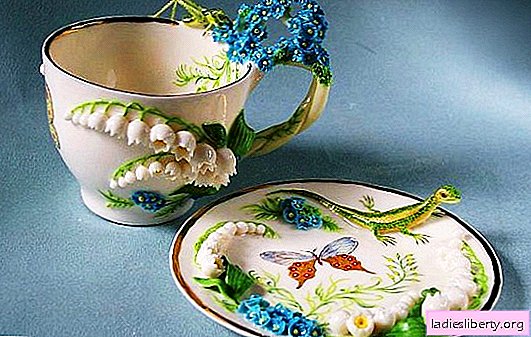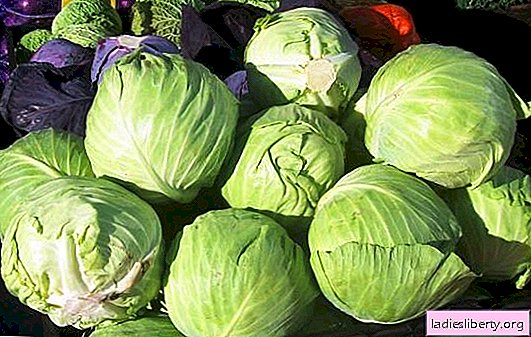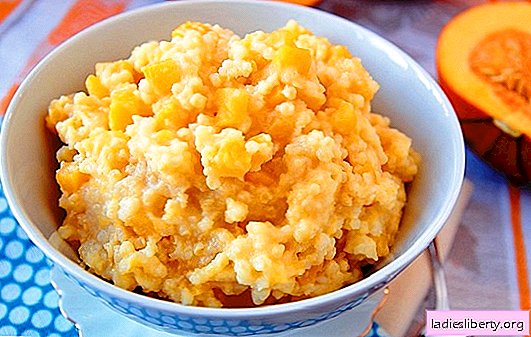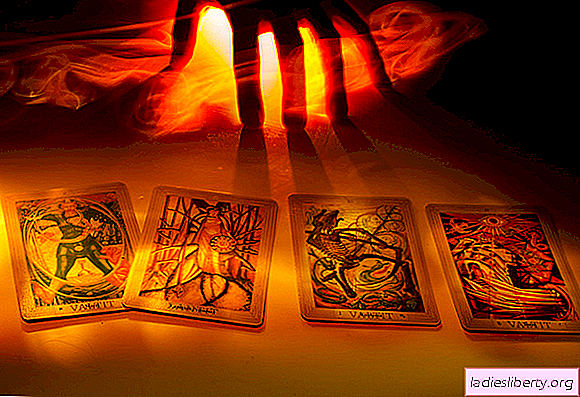
Cold porcelain is the most affordable, inexpensive and very easy to sculpt material.
It’s completely safe to work with him, and to create a craft you don’t need special skills in sculpting, even a preschooler can sculpt from porcelain.
You can make cold porcelain with your own hands at home.
DIY porcelain: recipe
There are a great many recipes for making cold porcelain, and each master has his own secrets and components. They have one thing in common: this is PVA glue (white, building), 1 part, 1 part of starch (it is recommended to take corn), 2 tablespoons of glycerin (sold in a pharmacy), 1 tables. spoon of baby cream (or any other).
The glue is poured into the pan or into the saucepan, the cream is added, the whole mass must be continuously mixed with fast movements, the saucepan is put on fire for heating, starch is gradually poured out, and stirring continues.
The mass thickens almost immediately, and will resemble an unmixed dough, gradually a “snowball” turns out in the saucepan, it must be laid out on a greased surface with a cream and allowed to cool a little. Then, the mass is mixed until smooth. In this form, the mass can be stored for up to 2 days, but it is better to use it immediately.
Cold porcelain as a material: do-it-yourself DIY crafts for beginners: master class
Making a lilac flower:
To begin with, a white flower is molded, and shades of color are applied later.
The mass dries quite quickly, so you need to close it with a piece of plastic film after each nipping.
1. A piece of mass the size of peas is nipped off.

2. Using your fingers, the pea is shaped like a drop.

3. With a small scissors, the drop is cut in width, several times so that the petals turn out. Then, carefully spread the resulting petals.

4. The flower goes beyond about three approaches, the finished product is attached to the shape with tweezers.
5. For the manufacture of the stem, a wire is taken, cut to the desired length, doubled up and twisted. The bend must be dipped in PVA glue, with a point - to pierce the flower in the middle, and pull the wire all the way. The product is installed in a vase until the glue dries. When the glue dries, the petals need to be closed.

6. We carry out a flower with petals of a different shape. A droplet is also molded, but now it is cut not in its wide part, but in a narrow one. We continue to do it step by step, as with the first flower.

7. Another variant of the flower is a lilac bud. To do this, pea immediately need to be strung on a wire with glue. Directly on the wire, the bead is shaped like a drop with the fingers. Scissors slightly cut the very top. Everything, the bud is ready!
8. We do this several times until a sufficient number of buds and flowers are created.

9. To get a colored flower, you need to tint the mass in the process of kneading. To do this, a piece of mass is plucked off, a little lilac-colored acrylic paint is dripped inside. It is important not to overfill, otherwise the mass will not mix well. Now you need to knead until smooth.
10. After making a sufficient number of flowers, you need to send them to dry in a place where there are no drafts. Approximately, it will take a day. After drying, the flowers decrease in volume by twenty percent.
11. Now you can collect the inflorescences, for this the wire is twisted. Inside the flower a drop of paint dyes the middle.
12. Leaflets are cut with scissors from a pre-rolled mass of green. The veins are stacked (sticks for modeling).
13. The bouquet is going. All is ready! You can admire!

Making Sakura Flowers
1. To sculpt sakura is no less interesting. To do this, two "sausages" are rolled from the mass: unpainted and tinted with pink. White sausage should be twice as large as pink. Now they need to be folded together and shaped into a block. Then, it is cut into cubes.

2. A petal is molded from a cube.
3. Petals gather in a flower, you need to fasten them with a small amount of PVA. The collected petals are punched with wire under the stalk.

4. Buds are made similar to lilac buds. Do not forget about a drop of glue on the wire.
5. Sakura sepals consist of five petals, they can be toned with cosmetic shadows. We repeat the operations - wire, glue, the bud and the sepals are going.
6. A branch of sakura is going to be similar to a lilac branch. It is necessary to take into account its natural appearance (you can first look at the photos of sakura on the Internet). A brown mass is applied to the twig in a small layer, imitating the bark of the twig. Fingers need to give characteristic cracks and protrusions.

DIY porcelain rose
To make a rose you will need everything in the photo:
1. A small ball rolls out.
2. A drop is formed from it.
3. The tip of the toothpick is dipped in PVA and the resulting drop is strung on it with a wide base down. This is the base of the flower. For fixation and stability, stick the end of the toothpick into the foam or sponge.
4. It is better to cook the flower pestle in advance so that they can dry.
5. We form the ball again. Finger gives the ball the shape of a drop.
6. On the palm, flatten our droplet, forming a rose petal. We make sure that the edges are not thick.
7. A drop of PVA is applied to the base of the rose for adhesion and the first petal is applied, it should slightly “hug” the center.
8. Repeat steps 5-7, forming the desired number of petals. Starting from the second petal, each subsequent one must be overlapped with the previous one.
9. We look at the photo of the rose flower and adjust to the real flower (we make tucks and bends in the right places)
Of these flowers, you can subsequently make a decorative topiary - a beautiful tree on a long leg. With branches of lilac and sakura, you can decorate the house, or give it to someone.
From cold porcelain you can make not only flowers, but also various figures, key rings, panels, decorate stucco pots with flowers, make interesting bas-reliefs and many more various crafts.













